I am an idiot and I still successfully made REAL pumpkin pie, so I know you can do it too. We're in November, so it's high time to hone your skills and impress your family and friends.
Using Real Pumpkin
No, it's not necessary. Yes, many people will claim that it doesn't make a difference. However, I'm a firm believer in the principle of doing everything completely from scratch, at least once. If nothing else, you get the satisfaction of turning a big, hard squash into a delicious pie. If you're determined to use canned pumpkin, skip this bit. (No pictures for this bit, I've already done all my steaming and pureeing for this year.)
1. Buy a Pie Pumpkin
You can use a "regular" jack-o-lantern style pumpkin, but they're usually more watery and less sweet; I'll mention any necessary adjustments later in the recipe. You can also use butternut squash. I've heard that "canned pumpkin" is actually made from a variety of butternut, but I have no idea if it's true. In any case, butternut flesh is much more orange and might give you a more "pumpkin pie" color.
At the store, pie pumpkins are the smallish ones that are labeled "pie pumpkins." Durhey. If you pick a big one, 8+ inches in diameter, it will yield enough pumpkin for at least two pies. A more average one, 4-6 inches, will likely yield just enough for one (or one plus a mini-pie).
2. Cook Your Pumpkin
Steaming is the fastest way to cook it, so I'll stick with that for now. You can also bake it, but it takes ages. (The same principles apply to butternut squash unless I say otherwise.) Pumpkins have a very hard skin, so it might take a while to saw through it with a normal bread knife. I was able to pry mine apart eventually, but if you have a clean hand saw lying around, you might be better off with that. Take my advice and don't try to cut through the stem parts. It's just way too tough in there.
Once your pumpkin is halved, remove the stem (if it has one) and scoop out the goopy bits. You can save the seeds for roasting or just throw them out, see if I care. An ice cream scoop works particularly well for this. Once your pumpkin is clean, it's time to get steaming!
Microwave steaming is the fastest, but if you don't have a microwave-safe dish big enough to hold all your pumpkin, you can do it on the stovetop just as easily. Just plonk it in a steaming basket and let it go until the flesh is tender. It shouldn't take longer than 30 minutes. Alternately, put it in the microwave with some water and let it go for fifteen minutes, check for doneness, et cetera.
Once it's tender, the flesh should scoop out of the skin pretty easily. So disembowel the pumpkin into a bowl. The flesh should NOT be watery; if you used a regular pumpkin or if you ended up with a really watery pie pumpkin for some reason, just let the flesh sit for a while (30 minutes or so) then pour off any free-standing water. If it remains wet after that, try squeezing it in some cheesecloth or letting it sit in a strainer in a bowl in the fridge overnight. You don't want to end up with a watery pie.
3. Puree Your Pumpkin
The flesh will probably be too dry to put in a blender for now; a handheld blender like this works best:
You will have to mash it and work it around, but eventually you'll get it all smooth. There are a lot of other ways to accomplish this; a food mill, a food processor, or even a hand mixer can work with some patience. However, if you have absolutely no tools at your disposal except for a blender, you can wait until mixing the filling together and use a blender.
You can freeze your pumpkin puree for later use, or pop it in the fridge for a few days.
DO NOT CAN PUREED PUMPKIN IT MIGHT KILL YOU
Well, now you are all ready to mix up your pumpkin pie filling. Time to go buy a frozen pie crust from the store, right?
WRONG.
Making Your Crust
Most of cooking is more of an art than a science, but baking is something else entirely - and pie crusts are one of the most intimidating baking tasks out there. No one wants to accidentally make - gasp - a tough crust. There are all sorts of tricks and tips and recommendations, but I have discovered that making a good, flaky pie crust really ain't that tough. You just need to follow one simple principle.
IT HAS TO BE COLD.
Really, that's it. A flaky crust is achieved by layers of fat melting slowly, for which they need to be cold. As long as you use cold water and cold shortening, your crust will turn out just fine.
Here is what you need:
1.5 cups flour
1/3 cup CHILLED water (at least 8 hours in the fridge)
3/4 cup CHILLED Crisco (blah blah blah)
Any kind of all-purpose flour will work, although I don't recommend using 100% whole wheat since it tends to fuck up most baking tasks. I used a cup of white and half a cup of whole wheat, and the crust turned out delicious. You can also use pastry flour, but it's not necessary. I don't recommend bread flour, as gluten is the enemy of a flaky crust. (Also, you can use butter instead of Crisco. Cold butter is impossible to work with, though, so some people recommend grating it beforehand. I've never used butter in crust, but I'm sure you can figure it out for yourself.)
Now do this:
1. Mix up the flour and Crisco using two forks (or one of those pastry masher things if you're fancy). The idea is not to mash them together, but to just push the ingredients around, lightly, until they have formed sticky bits of pseudo-dough. Then add the water, until the dough sticks together (but don't make it too wet!). You should be able to work with the dough without it completely flaking apart, but that's it.
2. Flour your rolling space and plonk the dough onto it. I have it on good authority that it's best to roll between two pieces of wax paper or in a pastry bag, but I never remember to buy either of those things, so I've found it works just fine to flour your counter, flour the top of the dough, and roll it out. Re-flour the dough as necessary to keep the rolling pin from sticking. (Protip: Any long glass or bottle can work as a rolling pin in a pinch.) Roll it out to about 1/8 inch.
DO NOT OVERWORK YOUR DOUGH! Working it produces gluten blah blah blah flaky crust. Just roll it out and lay it in your pie pan gently, sticking together and repairing any tears. This is also the time to clean up your edges and flute the crust, which is not as hard as it looks. Just stick a finger inbetween the edge of the dough and the pie plate; mash the dough around your finger and then remove it (your finger, not the dough). And voila!
Pop the pie crust into the freezer to keep it cold. This is important, remember, cold crust = flaky crust. Go ahead and PREHEAT YOUR OVEN for 450.
Making Your Filling
This basic recipe will probably have to be altered if you're using canned pumpkin, so refer to the directions on the can. Why are you even reading this? You disgust me!
Anyway.
You will need:
1 - 1 1/2 cups pumpkin puree
1/2 can skim evaporated milk
1 cup sugar
1 tsp cinnamon
1/2 tsp ground cloves
1/2 tsp allspice
1/4 tsp ginger
2 eggs (can substitute for 4 egg whites for cholesterol free!)
Mix it up! Use a mixer, hand blender, or actual blender. If you crave a really smooth pie, go ahead and blend the ingredients thoroughly. If you don't mind a few stray pumpkin fibers, just mix it. But make sure to mix it THOROUGHLY, as some of the spices you've used are heavier than others and can sink to the bottom of the pie.
In place of the spices, I use 3 tsp of pumpkin pie spice I bought at the farmer's market. You can use grocery store mix if you like. Every recipe differs slightly in what spices they call for, so if you feel more comfortable just using a spice mix, I won't tell.
DON'T DESPAIR that your mix is very runny. It will firm up in the oven, I promise!
This should yield plenty of filling for most pie dishes. However, if you have a particularly large or deep dish, you can add more of everything - another cup of pumpkin, another egg, more spices, more sugar, and more evaporated milk. The spices and sugar can be done pretty much to taste, so check on your filling every time you add something. Once it's perfect, go ahead and pour it into your crust!
Bake It
Pour the filling into the crust. If you have extra, you can make a tiny pie with extra crust or just bake it as a pumpkin pudding. I've been told by veteran bakers that sticking the pie back in the freezer for 20 minutes or so will help the filling set. This is a pretty good idea, especially with pumpkin pie, since the heavier spices have a habit of sinking to the bottom.
Once it's ready, pop it into the oven for 15 minutes. After that, turn the temperature down to 375 and bake for another 40 minutes. Test the pie with a table knife; if it comes out clean, your pie is done! You can also try flaking off a bit of the crust to see if it turned out nice and tender like I promised. You might have to give the pie a little longer, especially if it's very deep. At this point, however, I'd cover up the edges of the crust with tinfoil to avoid them burning.
And that's it. Your very own pumpkin pie. You're welcome.
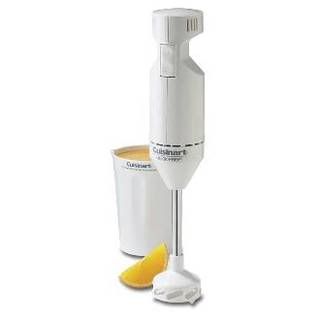
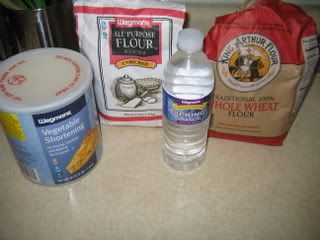
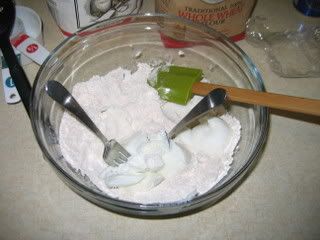
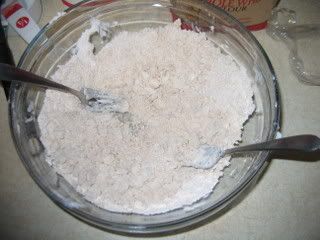

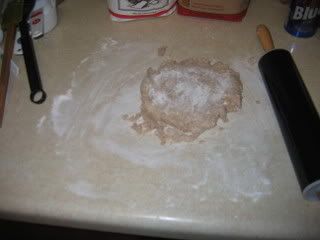
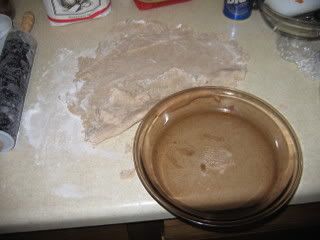
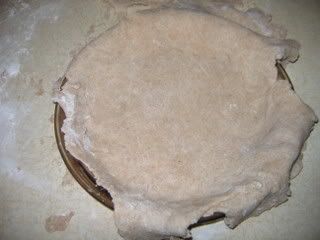
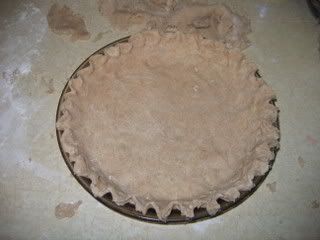
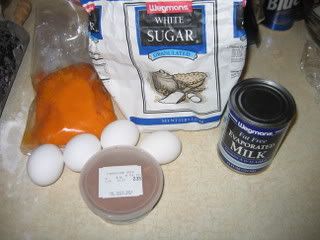
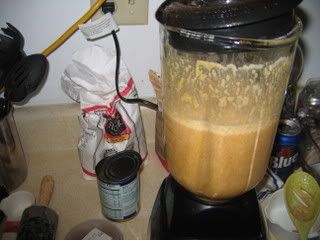
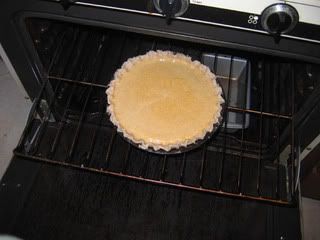
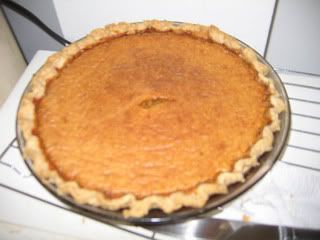








1 comments:
Great recipe. Thanks for posting it. I like to make things completely from scratch also and I'll give this a try.
Post a Comment